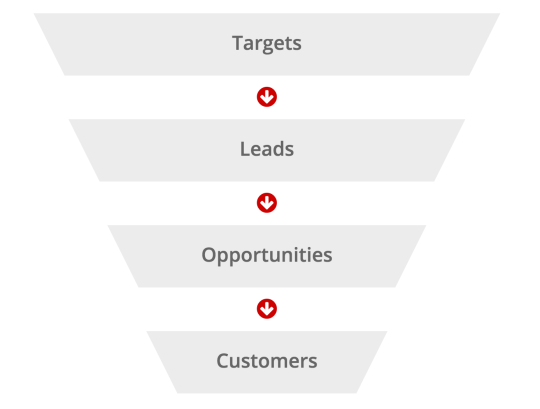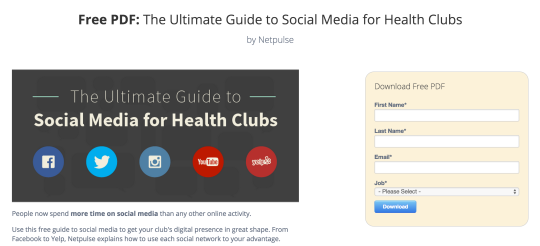This is article #1 out of 50 in The Startup Marketing Playbook.
You’ve heard it frequently: “Inbound” is key for B2B marketing. Many resources out there tell the story of inbound marketing, so we’ll keep this one simple.
First let’s review some vocabulary. We’re going to be using these terms often:
- Targets: people who match your criteria to become a customer. For example, for a daytime dog walking service, targets might be mothers between the ages of 30-50 who live in San Francisco and have a dog.
- Leads: targets for whom we have contact information (i.e., an email address or phone number).
- Opportunities: leads that have indicated they are ready, willing and able to make a purchase and become a customer.
- Customers: people who are paying to use your product or service (duh).
Each of those terms actually makes up a stage in the funnel (the journey a person goes through between having a need for a product and buying the product).

Inbound marketing is a set of strategies that help your targets find you and convert into leads.
We use inbound marketing to move people through that funnel. The process happens in several steps. I’m borrowing some terminology here from my friends at Hubspot:
1. Attract
The first step in inbound marketing is attracting targets to your website. This is done by producing and sharing quality, relevant content, such as PDF guides, ebooks, downloadable checklists, webinars, infographics, videos, podcasts and more.
The goal is to create content that isn’t just talking about your product, but instead providing real value and education for your targets, helping them solve problems related to your product. If you do this successfully, targets will be searching the Internet for this type of content and land on your website.
2. Convert
Once you have attracted targets to your website with quality content, the next step is converting them to leads by convincing them to provide you with their contact information (often an email address). This contact information is incredibly valuable to you as a marketer because it gives you a lead to nurture, offer additional content to and move along the buyer’s journey towards becoming a customer.
You can capture contact information by gating content (i.e., requiring a target to provide you with their contact information in order to download it). If that content is valuable enough, this is a worthy trade since you are providing it for free. Here is an example:

3. Close
As targets convert to leads by filling out the form above to download quality content, they are continuing to educate themselves about the problems your product solves, which moves them closer engaging with sales and closing. Throughout the sales process, opportunities may consume more content by attending your webinars or downloading a white paper or case study. This is great news for your sales team because it does some of the work for them. When opportunities begins engaging with the sales rep, they are much more “ready to buy” because they get more educated and comfortable through reading your content. From there, it’s up to the sales rep to squash sales objections and bring opportunities to a close, converting them to customers.
4. Delight
Especially if you are a B2B SaaS company, you are constantly in a sales process as your customers must renew each year. This means you have plenty of work to do in order to (1) keep your customers, (2) upsell them additional products and (3) turn them into evangelists that spread the word to other targets that could become customers. Leverage inbound marketing to deliver more value to customers by providing them how-to guides, templates and free educational webinars. This helps you accomplish 1, 2 and 3 above.
For a more in-depth overview of inbound marketing, consider reading Startups <3 Customers.